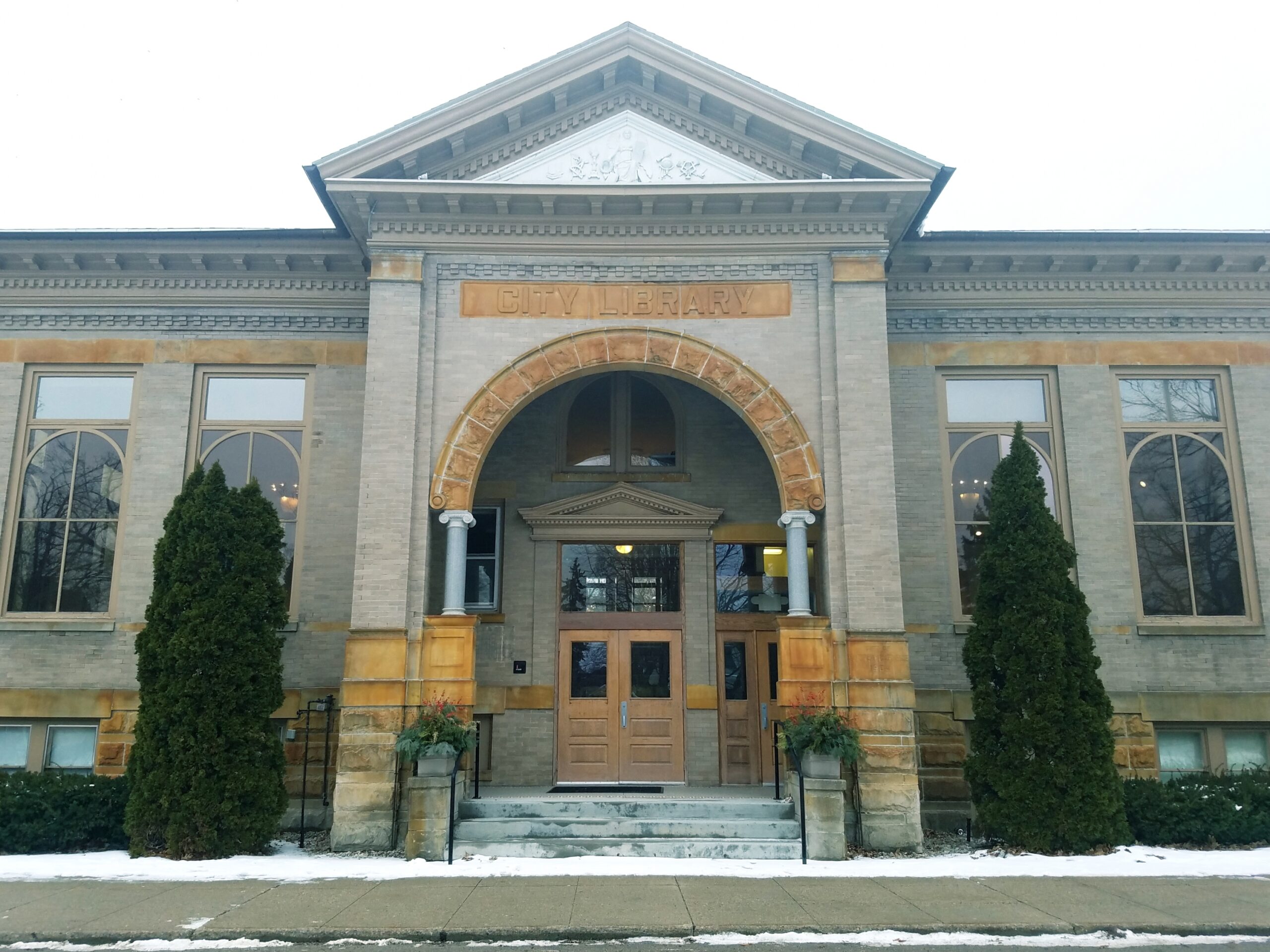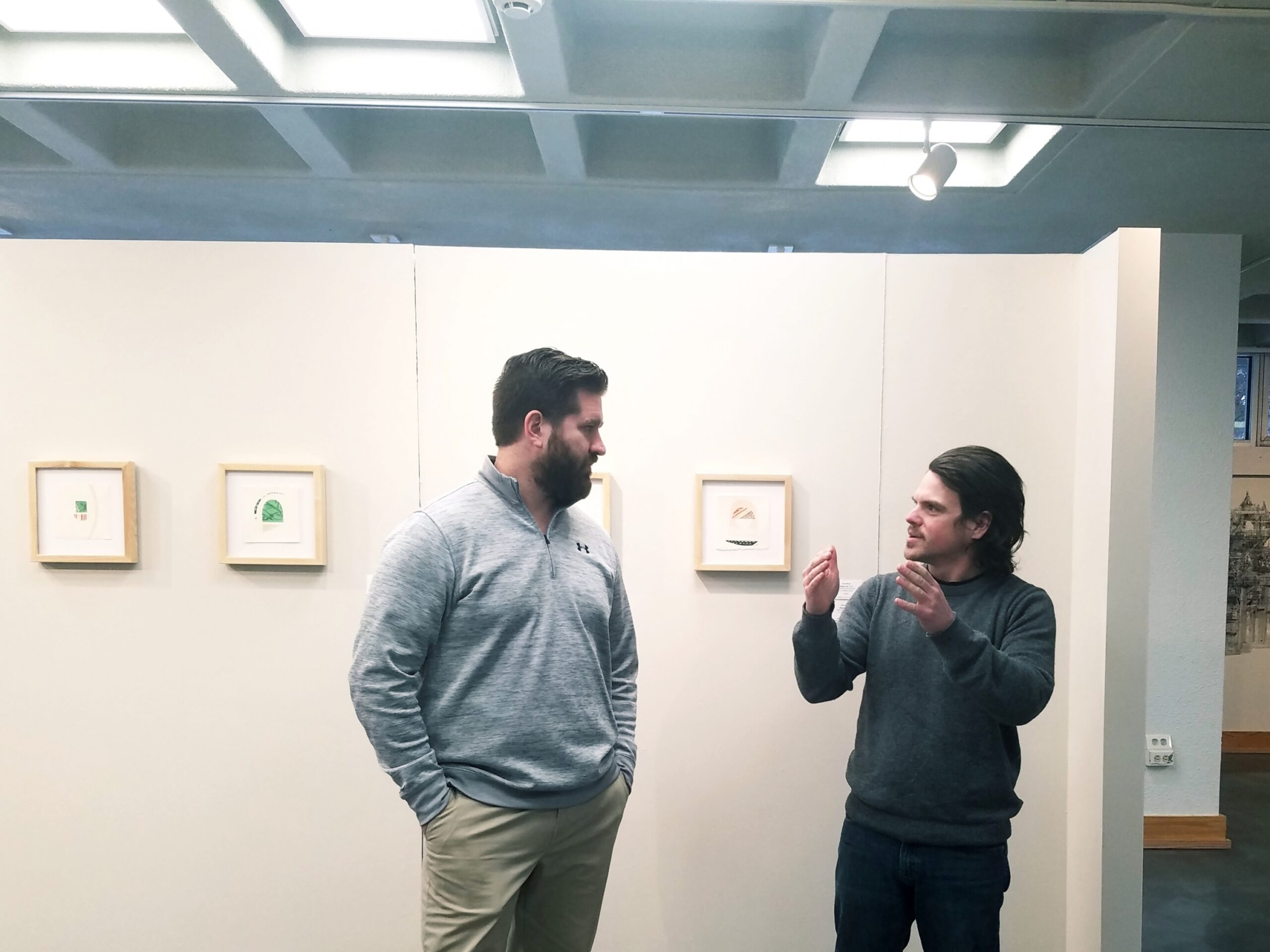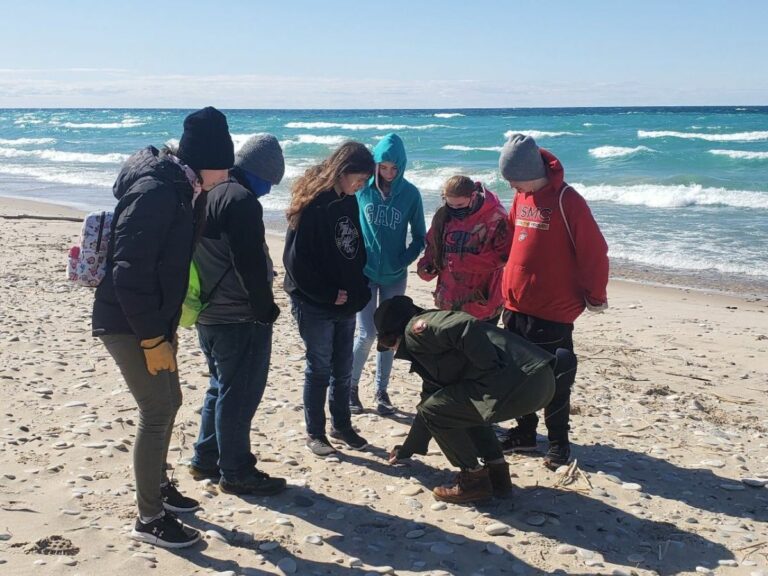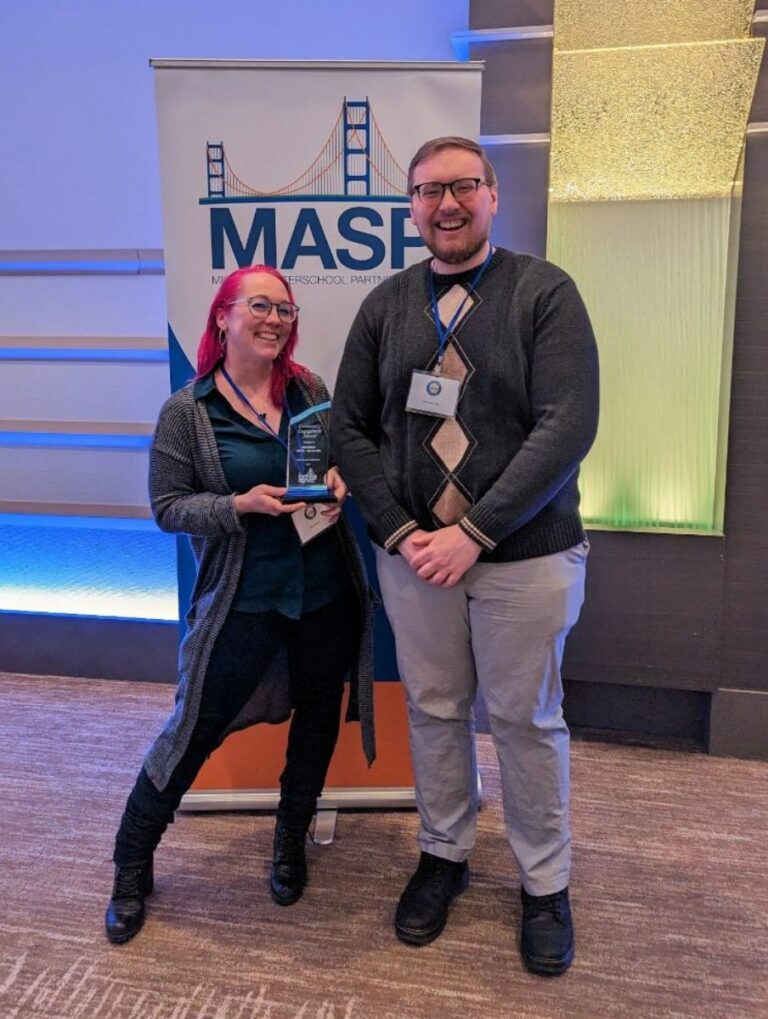The City of Traverse City replaced 76 light fixtures at the historic Carnegie Library Building based on energy efficiency recommendations made by SEEDS, moving the City towards its operational goal of 100% renewable electricity by 2020. The original 120 watt light fixtures were replaced with 39-watt flat panel LED lights, which will use 66% less energy.

The Carnegie Library Building was built in 1903 and was the home of the Traverse Area District Library until it moved in 1999 to a larger space. The historic building now houses the Crooked Tree Art Center which holds exhibitions, art classes, and other events.
“It is equally, if not more important, to consider conservation and efficiency measures as we make progress toward our 100% target,” said Mayor Jim Carruthers in response to the upgrades. According to Kevin Summers, SEEDS Energy Education Specialist, this fixture update could reduce the energy usage of the building by as much as 15,365 kilowatt hours a year, reducing greenhouse gas emissions by nearly 11 metric tons. “That’s equivalent to the carbon sequestered by 13 acres of forest in one year,” he said, adding that “the new lights will pay for themselves while also providing improved lighting for the gallery and classroom spaces.”

Derek Melville, Traverse City’s Park and Recreation Superintendent, and Kevin Summers, SEEDS Energy Education Specialist, discuss the technicalities of the new LED light fixtures, that will use 66% less energy than the originals.
“We are trying to be sustainable and environmentally-friendly in our parks and public buildings,” said Derek Melville, Traverse City’s Park and Recreation Superintendent and responsible for project implementation. “We are responsibly using City dollars efficiently to make them go as far as possible.” By replacing the old fixtures with new, more efficient technology, the City avoided making costly repairs to aging, outdated, and unsafe lighting fixtures. The City is also working with its municipal electric utility, Traverse City Light & Power, on a partial rebate, which will further reduce the cost of an an already cost-effective project.”




